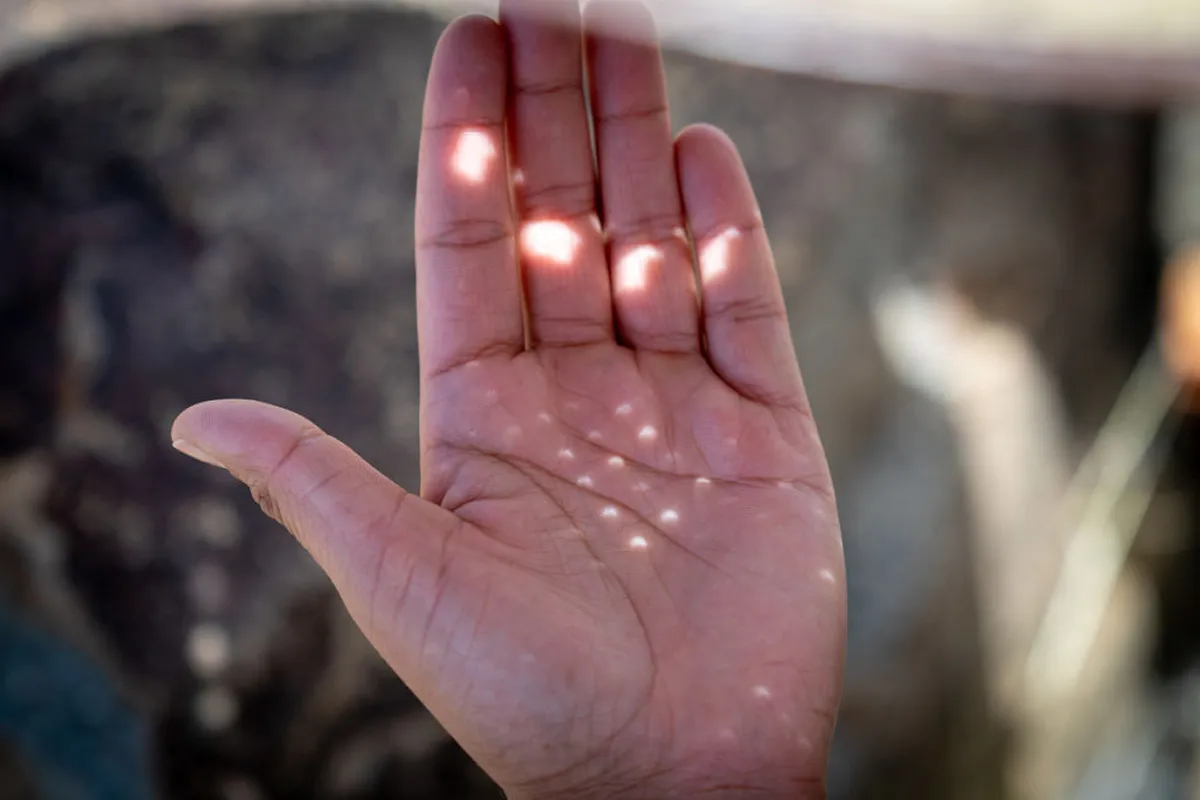There's a solar eclipse taking place this Saturday, 29 March 2025, starting at around 10am UTC.
Solar eclipses occur when the Moon passes in front of the Sun, appearing as though a 'bite' is being taken out of the solar disk.
During a total solar eclipse, the Moon covers the Sun completely, but during a partial solar eclipse, only some of the Sun is covered by the Moon.

If you're observing a solar eclipse directly, you need to wear eclipse glasses, as not doing so could damage your eyesight.
But if you don't have eclipse glasses, there is a way you can still observe the effects of the eclipse.
It's called 'solar projection', or 'pinhole projection', and this is how to do it.
Pinhole projection for a solar eclipse

Solar eclipse projection involves projecting an image of the Sun during a solar eclipse, so you can indirectly observe the shadow of the Moon passing in front of the Sun.
This is not as tricky as it sounds, involving just two pieces of white card and, if you have it, a multi-holed object like a colander or tea strainer.
Projecting a solar eclipse in this way means you're observing the effects of the Moon passing in front of the Sun without actually looking at the Sun itself.
It's a great option if eclipse day has arrived and you haven't managed to get your hands on a pair of eclipse glasses, because without eclipse glasses, you should not directly look at the Sun or a solar eclipse.
Projection is best for partial solar eclipses, or during the early and late stages of a total solar eclipse, when the Sun is turned into a crescent shape as the Moon passes in front of it.
How to do it

Take two pieces of white card. Set up the first one so that it's 'facing' the Sun.
Make a circular hole of about 3mm in diameter in the second piece of card.
Hold up the second piece of card so it's casting a shadow on the first piece of card.
A thin beam of sunlight should be forming a mini circle of light on the first piece of card.
This is a projection of an image of the Sun.
If you do this during a solar eclipse, you'll see that, as the Moon moves in front of the Sun, the shadow of the Moon is visible in the projected pinprick of sunlight on your white card.
This circular beam of light becomes a crescent as the Moon passes in front of the Sun.

Quick! To the kitchen!
If you use a multi-holed object like a colander or a tea strainer, you'll project multiple views of the same solar eclipse onto a single piece of card.
Each hole in the colander is acting like that 3mm hole you made in the card.

During the solar eclipse, sunlight streaming through your colander or tea strainer forms lots of little crescents on the white card.
You might also notice the same effect when viewing sunlight on the ground that's passed through tree foliage, for example.

Why not take a photograph of this projected solar eclipse view, or make a sketch of it?
You can download and print out a solar observing form (PDF) that will give you a canvas on which to sketch the effects of the eclipse projection.
A group of you could sketch the projected eclipse shape at different times, then you'll have a step-by-step view of how it played out.

Keep your eyes on the card
While projecting an image of the solar eclipse, you might feel a temptation to look at the Sun and compare what's going on up there with what you're seeing on the card.
It's likely that younger children, too, might be keen to investigate what's causing these tiny crescent shadows to appear.
Resist the temptation! And make sure you supervise younger children so they don't instinctively look up at the Sun during the solar eclipse.
Looking directly at the Sun, eclipse or not, is dangerous and could damage your eyesight.

If you want to look directly at a solar eclipse, you must wear safe, certified eclipse glasses.
The projection method described above is ideal if you haven't managed to get your hands on a pair, or if at the last minute you find your eclipse glasses are damaged.
You can find out more about safety in our guides to safely viewing a solar eclipse and how to make sure your eclipse glasses are safe.
If you successfully project a solar eclipse and make a sketch or capture an image of it, be sure to share your experiences and images by emailing contactus@skyatnightmagazine.com
